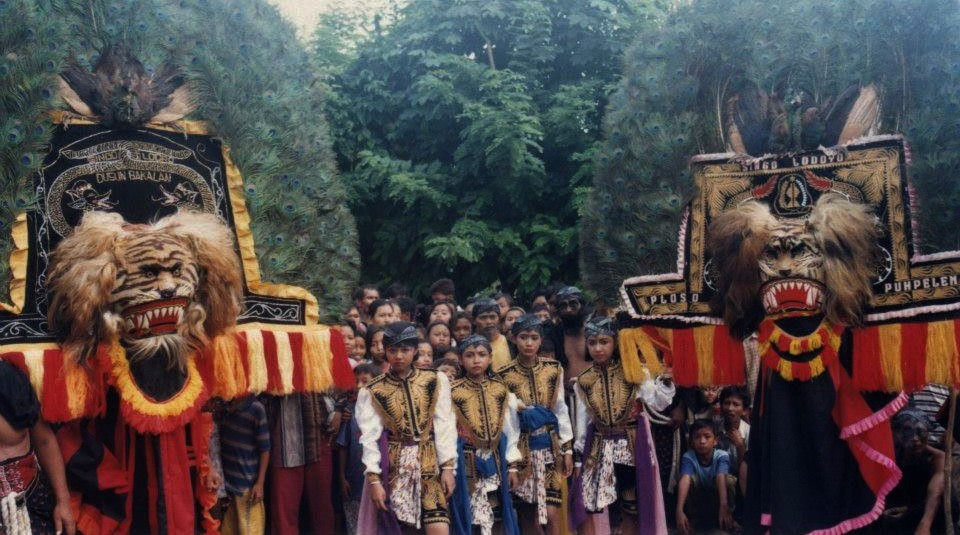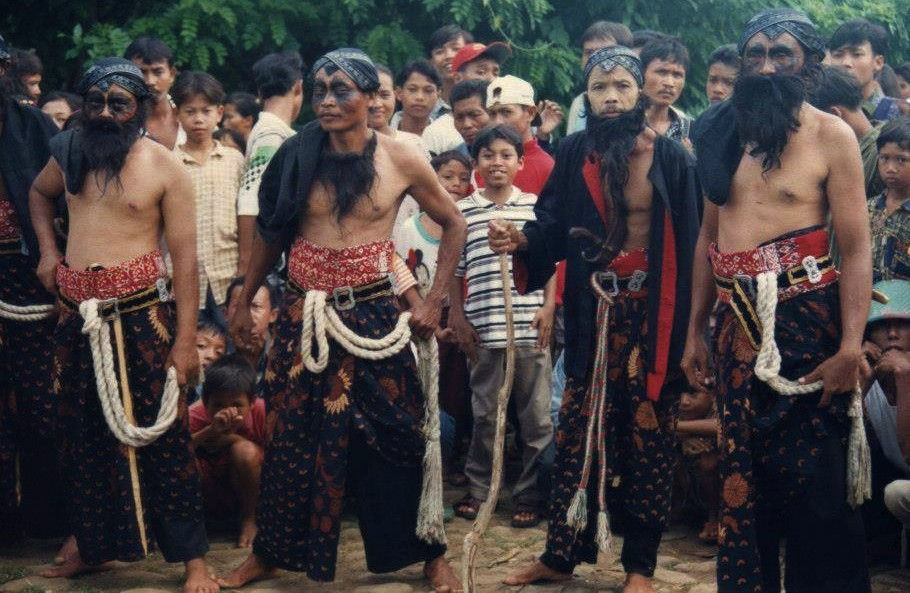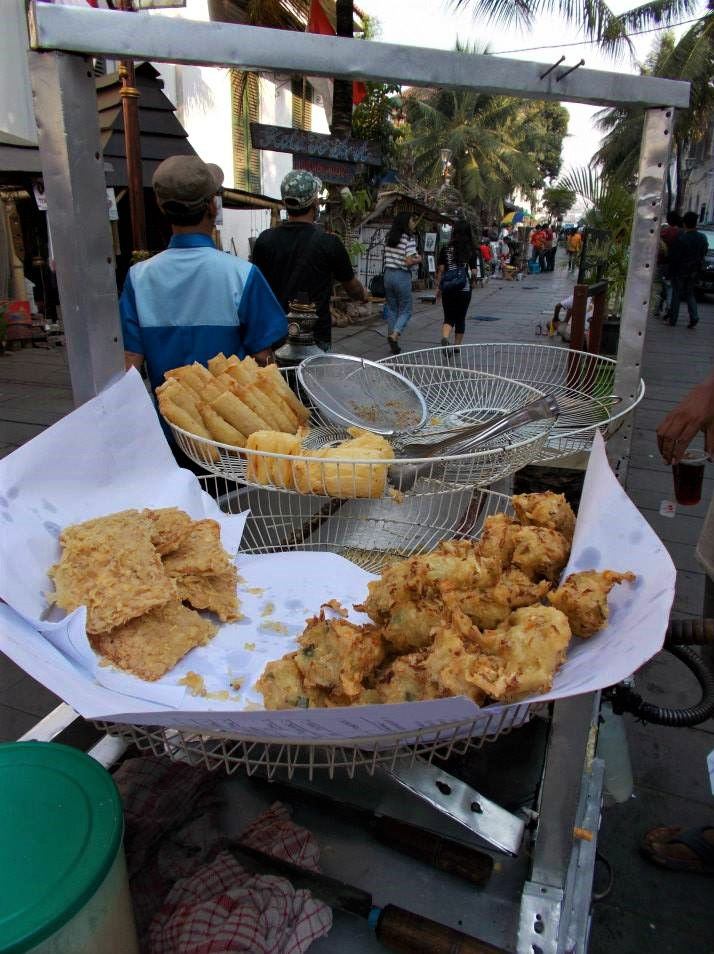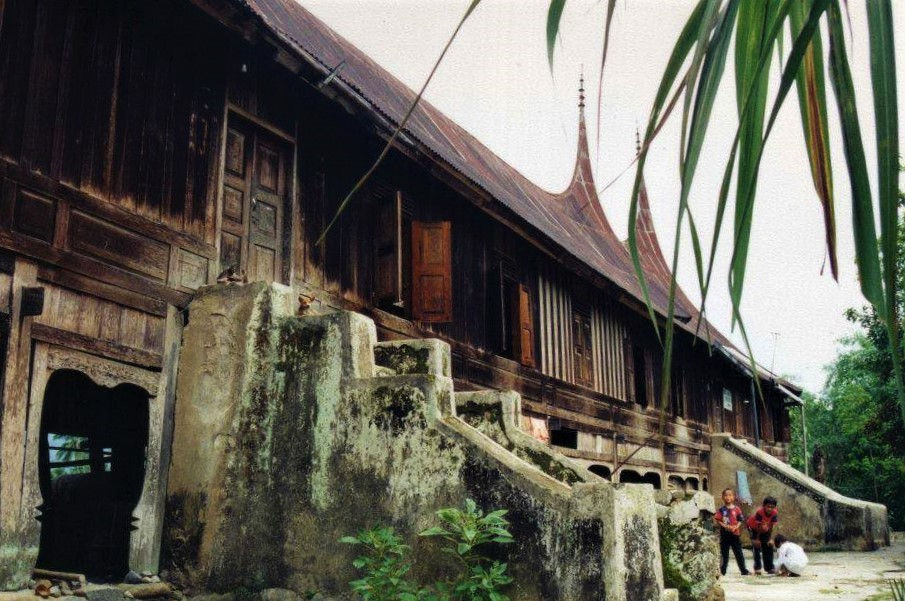Bakalan: Reog
- Matthew P G

- Oct 21, 2022
- 3 min read
Updated: Mar 17, 2023



Bakalan, Central Java. March 1997
My friends in Bakalan, right on the border of Central and East Java, told me that there would be a Reog dance in their village as part of a larger ceremony. That alone made it worth the long voyage from Jakarta to the little mountain village clinging to the flank of the volcanic Lawu Massif.
The Reog dance originated in Ponorogo which was the largest close city. However, Bakalan was in Central Java, and Solo, its capital, was one of the cultural, beating hearts of the island. Nearby Ponorogo was in East Java. My Bakalan friends unfailingly told people they were from Solo even though they celebrated the rituals from nearby Ponorogo. That city "invented" the Reog dance. I never quite understood my friends from Bakalan's cultural schizophrenia - they were desperate for people to know they were from Solo (known for its cultured and polite people), yet they participated in the Reog from nearby Ponorogo in the next province where they rarely traveled and claimed not to be associated with??
The dance describes Klono Sewandono the king of Ponorogo on his journey to Kediri to seek the hand of Princess Songgo Langit. On his journey he was attacked by a vicious monster called Singo Barong, a mythical lion with a peacock on its head. Historians trace the origin of Reog Ponorogo as satire on the incompetence of Majapahit rulers during the end of the empire. It describes the innate Ponorogo liberty and its opposition to centralist Majapahit rule. The lion represents the king of Majapahit while the peafowl represents the queen. It was suggested that the king was incompetent and always being controlled by his queen. The beautiful, youthful and almost effeminate horsemen describes the Majapahit cavalry that have lost their manliness.
However, the following was the aspect of Reog that was most well-known across Indonesia:
Reog Ponorogo dancers traditionally perform in a trance state. Reog Ponorogo displays traditional Kejawen Javanese spiritual teaching. Next to the physical requirement, the dancers—especially the Warok—were required to follow strict rules, rituals and exercises, both physical and spiritual. One of the requirements is abstinence. A warok is prohibited to indulge or be involved in sexual relationship with women, yet having sex with boys aged eight to fifteen is allowed. The boy lover is called Gemblak and usually kept by a Warok in their household under the agreement and compensation to the boy's family. Warok can be married with a woman, but they may kept a Gemblak too. This led to Warok-Gemblak relationship that was similar to pederastic traditions of ancient Greece. Anybody in touch with the traditional way of life in Ponorogo knows that older men called Warok, instead of having sex with their wives, have sex with younger boys. What Warok and Gemblak did was a homosexual act, yet they never identify themselves as homosexual.
(Wikipedia)
What a convoluted history of a traditional dance. However, my friends, those guys from village Bakalan who steadfastly "were from Solo", still loved the Reog dance since they were in the cultural orbit of Ponorogo.
I was the only white face that day in Bakalan, but I was known to the village after frequent visits. They all let me snap away photos because they knew I would share prints with them later if they requested. It was such a strange feeling seeing one of these dances knowing it was "real" and not being put on for tourists. It gave me hope that those traditions would survive. The whole of the village turned out on a mountain road to watch the ceremony performed near the home of the sponsor (someone had to pay for it). It was a great family event for sure. I was witness to cultural knowledge being passed on to the younger generation, a privilege indeed.
I am not sure how long traditions like the Reog will continue in Indonesia. As the country becomes more religious and conservative, those older non-Islamic customs may fall by the wayside. I felt honored I could attend a real Reog dance in the mountains of Java. One of my most cherished memories of my entire time in Indonesia, I deeply appreciated the opportunity to know those guys and their families from that little mountain village. They ended up teaching me a lot about Indonesia and life in general.



Comments